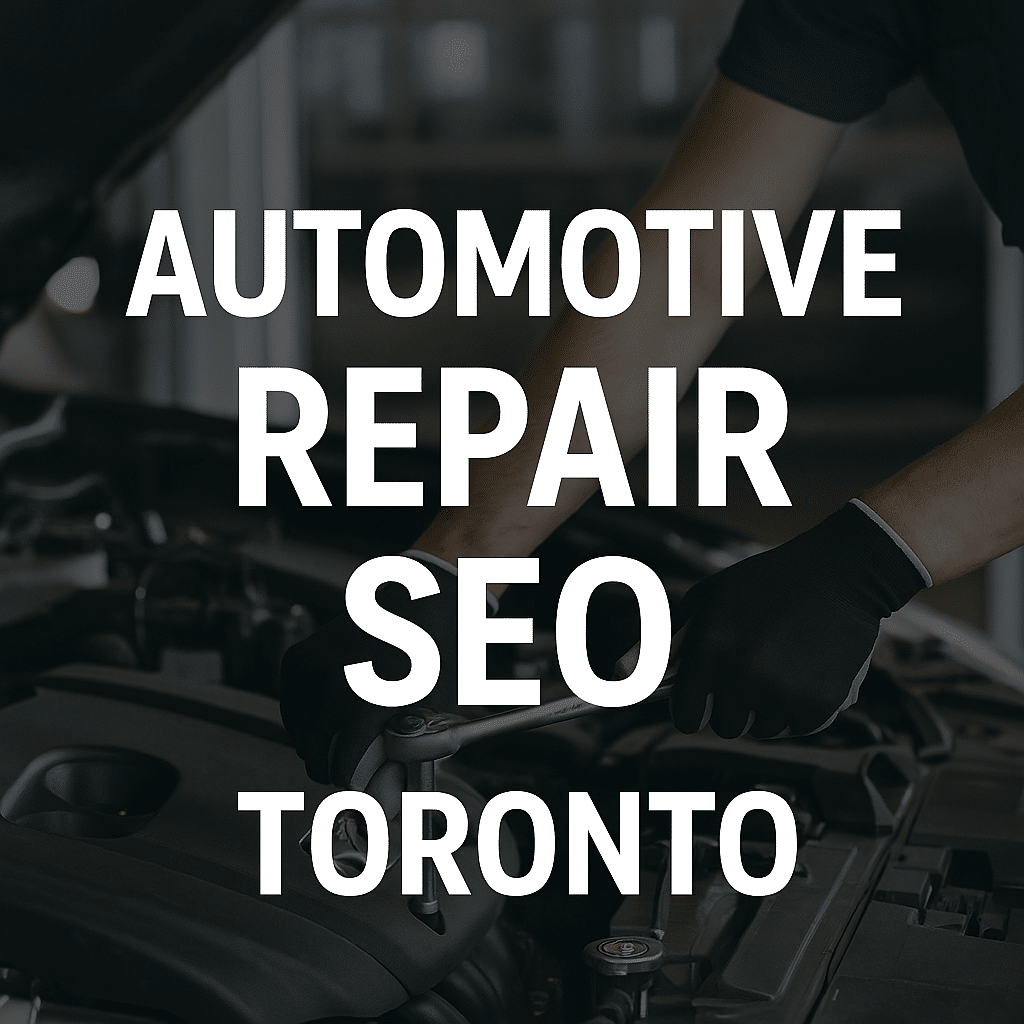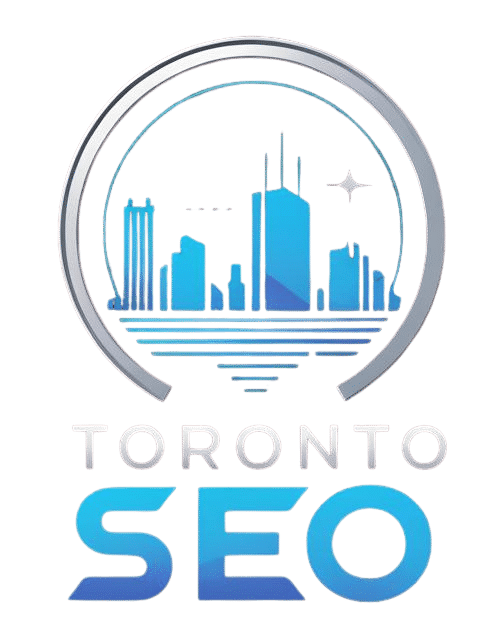How to Get More Clients from Google

If your auto repair shop in Toronto isn’t on the first page of Google, you’re missing out on dozens of customers a week. With the average person searching online before even thinking of walking into a garage, Automotive Repair SEO in Toronto is no longer optional — it’s your lifeline. This guide shows you how to dominate the local search results, rank in the Google Map Pack, and become the #1 choice for vehicle owners in your area.
Why Local SEO Matters for Toronto Auto Repair Shops
Most people in the GTA search for terms like:
“brake repair Toronto”
“best mechanic near me”
“oil change Scarborough”
If your website isn’t showing up, they’ll never find you. Local SEO ensures you’re found, clicked, and contacted by the right customers at the right time.
Step-by-Step: How to Rank Your Auto Repair Shop in Toronto
1. Claim and Optimize Your Google Business Profile (GBP)
Your GBP is your golden ticket to the Map Pack — those top 3 results under the map. You must:
Use your actual business name
Add your local Toronto address
Use a 416 / 647 area code
List all services: oil changes, engine diagnostics, tire repair, etc.
Upload high-quality, real images of your garage
Collect at least 40+ reviews (and reply to every one)
Bonus: Post weekly updates or offers on your GBP to show freshness — Google loves that.
2. Target High-Intent, Local Keywords
You’re not trying to rank globally. You’re trying to rank when someone types “auto repair near Yonge and Bloor.” Target geo-modified, service-based keywords like:
Car repair shop Toronto
Transmission repair Etobicoke
Mechanic North York
Auto service downtown Toronto
Tire change Scarborough
Check engine light Vaughan
Use these keywords on your:
Homepage
Service pages
Meta titles + meta descriptions
Blog content
3. Create Location + Service Specific Pages
Most garages make the mistake of listing everything on one page. You need individual landing pages for each service and neighborhood. Example:
/brake-repair-toronto//oil-change-etobicoke//transmission-repair-scarborough/
Each page should include:
H1 with the service + location (e.g. “Brake Repair Toronto”)
Service-specific content (250–500 words)
Benefits of choosing your shop
Call to action (Book Now / Get a Quote)
Reviews/testimonials
4. Add Schema Markup
Use Local Business schema to help Google better understand your business. Use tools like TechnicalSEO.com to add:
Business name, address, phone (NAP)
Hours
Geo-coordinates
Services
This improves your appearance in search results and can trigger rich results (stars, map pins, etc.).
5. Build Local Backlinks That Matter
Forget spammy PBNs. Focus on Toronto-based, niche-relevant backlinks, such as:
Local news or blogs
Sponsorships with car clubs or events (get a backlink)
Guest posts about car care or seasonal maintenance tips
Make sure your business is listed on:
Google Maps
Apple Maps
Bing Places
Yelp Canada
YellowPages.ca
BBB Canada
AutoRepair.ca
Boosting Trust and Reputation with Reviews
Google doesn’t just crawl your website — it watches what customers are saying. Your ranking is heavily influenced by quantity and quality of reviews. Focus on:
Getting 5-star reviews after each visit
Asking for reviews via SMS or email
Responding professionally to all feedback (especially negative)
Mentioning specific services in replies (for keyword relevance)
Tip: A review that says “These guys did an amazing oil change in Toronto” boosts SEO and conversions.
Content Strategy That Converts
A garage with a blog? Absolutely — if you want to rank for long-tail keywords and get free traffic all year. Try blog topics like:
“Why Your Car Shakes When Braking – Advice from Toronto Mechanics”
“How to Prepare Your Car for Toronto Winters”
“Transmission Trouble? 5 Signs to Watch for”
Each post should:
Be 800–1200 words
Use internal links to service pages
Target a long-tail keyword (e.g. “oil change deals Toronto”)
Technical SEO Must-Haves
Make sure your website isn’t holding you back:
Mobile-first design (more than 75% of traffic is mobile)
Load time under 2 seconds (use GTMetrix)
SSL certificate (HTTPS)
Easy navigation with clear CTA buttons (Call, Book Now, Get a Quote)
Fast, reliable hosting — no cheap shared servers
How to Dominate the Google Map Pack
Ranking organically is great — but ranking in the Map Pack is even better. Here’s how to get there:
Consistent NAP (Name, Address, Phone) across every site
40+ 5-star reviews
Clicks to your site from your listing (CTR matters)
Monthly GBP posts (offers, service updates)
Photos and service updates
Don’t forget to embed your Google Map location on your Contact page for extra SEO juice.
Example Internal Linking Structure
Use keyword-rich internal linking like this:
Learn more about our brake repair in Toronto
Schedule your oil change in North York
Explore our engine diagnostics services
This strengthens your site architecture and pushes link equity to key pages.
Top External Sites to Build Authority
To build trust and relevance, link out naturally to:
These are DA50+ trusted sources in the auto space and improve topical authority.
FAQs About Automotive SEO in Toronto
How long does it take to see SEO results?
Most auto repair shops in Toronto see improvement in 3–6 months, especially with aggressive local SEO.
Can SEO work without ads?
Absolutely. SEO gives you free, long-term traffic. Pairing it with Google Ads gives you full coverage.
What’s the fastest way to rank locally?
Start with GBP optimization, reviews, and citations. It’s the quickest route to the Map Pack.
Do I need a blog for auto SEO?
Yes — a blog helps you rank for long-tail, seasonal, and question-based queries that convert.
Final Thoughts: Take the Wheel and Own Your Market
In a city like Toronto where car problems are inevitable and competition is cutthroat, your shop needs to be visible, trusted, and optimized. Implementing a smart, locally focused SEO strategy will not just get you traffic — it’ll get you booked solid.
Whether you’re a one-bay shop in Etobicoke or a full-service garage in Scarborough, this is your chance to outrank the chains and dominate your zone.

